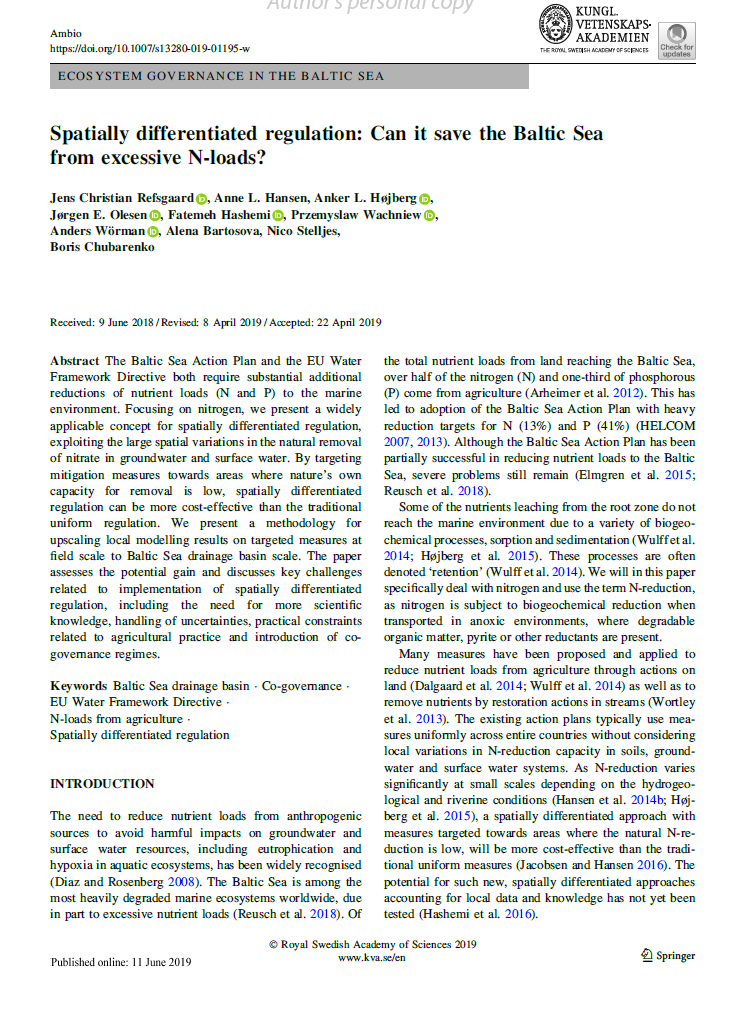Spatially Differentiated Regulation: Can it save the Baltic Sea from excessive N-loads?
- Publication
- Citation
Jens Christian Refsgaard, Anne L. Hansen, Anker L. Højberg, Jørgen E. Olesen, Fatemeh Hashemi, Przemyslaw Wachniew, Anders Wörman, Alena Bartosova, Nico Stelljes, Boris Chubarenko (2019): Spatially differentiated regulation: Can it save the Baltic Sea from excessive N-loads?. Ambio, https://doi.org/10.1007/s13280-019-01195-w
The Baltic Sea Action Plan and the EU Water Framework Directive both require substantial additional reductions of nutrient loads (N and P) to the marine environment. Focusing on nitrogen, we present a widely applicable concept for spatially differentiated regulation, exploiting the large spatial variations in the natural removal of nitrate in groundwater and surface water. By targeting mitigation measures towards areas where nature’s own capacity for removal is low, spatially differentiated regulation can be more cost-effective than the traditional uniform regulation. We present a methodology for upscaling local modelling results on targeted measures at field scale to Baltic Sea drainage basin scale. The paper assesses the potential gain and discusses key challenges related to implementation of spatially differentiated regulation, including the need for more scientific knowledge, handling of uncertainties, practical constraints related to agricultural practice and introduction of co-governance regimes.





